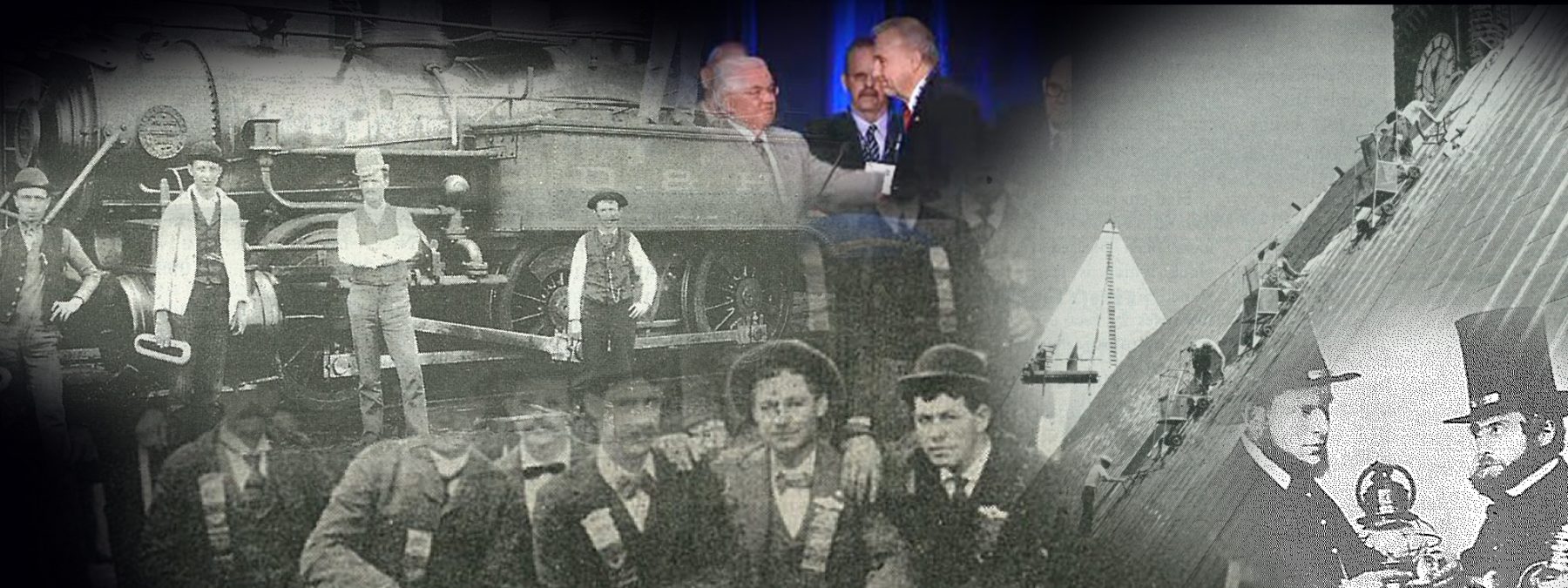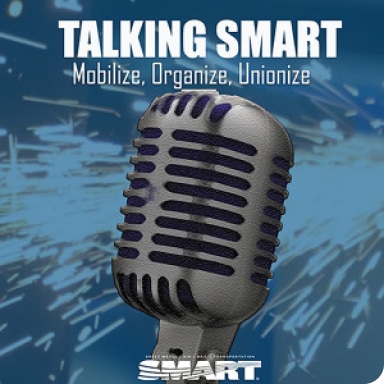SMART’s history includes the legacies of the Sheet Metal Workers’ International Association (SMWIA) and the United Transportation Union (UTU), two predecessor organizations that merged in January of 2008. Combined, these unions hold over 200 years of history and tradition. This history continues today with you, as part of the current generation of SMART members living and working in cities and communities across North America.
HISTORY OF THE INTERNATIONAL ASSOCIATION OF SHEET METAL, AIR, RAIL AND TRANSPORTATION WORKERS
1866 – National Labor Union formed.
1868 – Founding of the Order of Railroad Conductors and Brakemen.
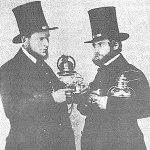
1868 – UTU predecessor, Order of Railroad Conductors and Brakemen (ORC&B) is established as the Order of Railway Conductors of America.
1873 – UTU predecessor, the Brotherhood of Locomotive Firemen & Enginemen (BLF&E) is established as the Brotherhood of Locomotive Firemen.
1881 – American Federation of Labor (AFL) predecessor Federation of Organized Trades and Labor Unions formed.
1883 – UTU predecessor, the Brotherhood of Railroad Trainmen (BRT) established as Brotherhood of Railroad Brakemen.
1888 – Wind turbines for grid electricity invented.
1888 – January 25: Tin, Sheet Iron, and Cornice Workers’ International Association established in Toledo, Ohio. President Archibald Barnes; Secretary A.W. Chatfield; Treasurer Robert Kellerstrass.
1890 – Tin, Sheet Iron, and Cornice Workers’ International Association affiliates with the American Federation of Labor (AFL).
1893 – Almost 1,700 railroaders died in workplace accidents this year, yet employers faced no criminal or civil penalties for failing to provide a safe workplace.
1893 – Congress passed the Safety Appliance Act, which outlawed so-called link-and-pin couplers that were causing more than 300 deaths annually, as well as most 9,000 injuries to railroaders involving lost fingers, hands and arms.
1894 – With the legendary Eugene Debs leading, railroad workers struck the Pullman Palace Car Co. and immediately were confronted by thousands of U.S. federal troops. A dozen strikers were killed and many more were injured.
1894 – UTU predecessor, the Switchmen’s Union of North America (SUNA) is established.
1896 – Tin, Sheet Iron, and Cornice Workers’ International Association becomes the Amalgamated Sheet Metal Worker’s International Association (IA).
1896 – First Canadian sheet metal local chartered in Toronto, Ontario, and becomes Local 30.
1899 – First charter granted to the union by the American Federation of Labor.
1901 – Sheet metal membership at 5,581, with 108 local unions.
1902 – Willis Carrier, a mechanical engineer from Buffalo, N.Y., designed the first air conditioning unit. Early units were very large, expensive and extremely dangerous because the ammonia used as a coolant was highly toxic.
1902 – Death Benefit program established for sheet metal workers, also the first constitution of the Tin, Sheet Iron, and Cornice Workers’ International Association is established.
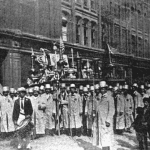
1903 – Name changed to the Sheet Metal Workers’ International Alliance; headquarters moved to Kansas City, MO in 1904.
1906 – Coppersmith’s International Union joins the IA.
1908 – AFL Building Trades Department charters Alliance.
1908 – Congress passed the Federal Employers’ Liability Act, which remains in force and permits injured railroad employees to sue negligent employers.
1912 – Sheet metal workers affiliate with the AFL’s Railway Employees’ Department (RED).
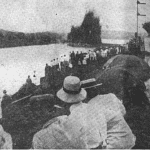
1919 – Alliance establishes Employment Committees to aid returning WWI veterans in finding jobs.
1919 – Amalgamated Sheet Metal Workers General President J.J. Hynes endorses “Plumb Plan,” calling for railroad nationalization.
1920 – U.S. railroads returned to private industry; Railroad Labor Board established.
1921 – Sheet Metal General Executive Council includes its first member from the railroad industry.
1922 – 400,000 railroad shop workers strike; federal injunction quashes union strike support activities; strike ultimately is defeated.
1924 – Name changed to Sheet Metal Workers’ International Association (SMWIA).
1925 – Pacific Coast Conference of Sheet Metal Workers agrees to affiliate with the SMWIA; membership of SMWIA increases to 24,000, with 441 local unions.
1926 – Congress passes the Railway Labor Act (RLA), which, for the first time, required employers to bargain in good faith with employee-designated representatives. The RLA also established the process of mediation, arbitration and fact-finding boards. A crucial difference between the Railway Labor Act and the National Labor Relations Act (which would be passed almost a decade later) is that under the NLRA, employees may strike at the expiration of a contract. Under the RLA, contracts do not expire and the RLA provides for an arduous process intended to limit and even block the right of employees to strike, or employers to lock out employees.
1926 – SMWIA helps organize the Railway Labor Executives’ Association (RLEA) to develop industry-wide policies and coordinate lobbying efforts.
1927 – Members from Local 206 in San Diego, Calif., build a major portion of what became the “Spirit of St. Louis,” the plane Charles Lindbergh flew across the Atlantic in May 1927.
1929 – Wall Street stock market crash.
1931 – Davis-Bacon Act passed.
1932 – Norris-LaGuardia Act enacted.
1933 – Brotherhood of Railroad Trainmen organizes interstate bus operators.
1934 – National Mediation Board (NMB) established by amendment to the RLA.
1935 – National Labor Relations Act passed. Also known as the Wagner Act, this long-sought seminal legislation guarantees the right of private sector employees to organize into trade unions, engage in collective bargaining and take collective action such as strikes. To this day, it serves as the linchpin of federal labor law in the United States.
1935 – Standard Form of Union Agreement (SFUA) endorsed at Chicago convention of SMWIA.
1935 – Social Security Act passes.
1935 – Committee for Industrial Organization (CIO) formed as a rival to the American Federation of Labor (AFL).
1936 – RLA expands to include the airline industry.
1936 – The Walsh-Healy Public Contracts Act passes. Part of the New Deal, the Act applied to U.S. government contracts exceeding $15,000 for the manufacturing or furnishing of goods and established overtime pay for hours worked in excess of 40 hours per week by contractor employees, and set the minimum wage equal to the prevailing wage as determined by the Secretary of Labor.
1938 – The Fair Labor Standards Act passes as part of the New Deal. The FLSA created the right to a minimum wage and “time-and-a-half” overtime pay when people work over 40 hours a week. It also prohibited the employment of minors in “oppressive child labor.”
1942 – During WWII, a number of SMWIA members engaged in secret work associated with development of the atomic bomb at different facilities across the United States.
1946 – SMWIA membership has doubled from pre-World War II numbers.
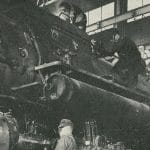
1947 – The Taft-Hartley Act passes after Congress overrides a veto from President Harry Truman. The Act removed the ability of unions to strike in a number of ways. It categorized the following as unfair labor practices: jurisdictional labor strikes, wildcat labor strikes, solidarity/political strikes and secondary boycotts. The Act also allowed individual states to outlaw closed shops. Any state law that outlaws such arrangements is known as a “right-to-work” state.
In the development of right-to-work laws, pro-Jim Crow sentiment was used as an argument in favor of these laws. Vance Muse, one of the early advocates of right-to-work policy and a fierce racist and union adversary, used it as a tool to keep collective bargaining away from minority workers and limit the growth of unions. To this day, right-to-work laws serve as a continuation of early Jim Crow policies.
1947 – SMWIA and the Sheet Metal and Air Conditioning Contractors’ National Association (SMACNA) negotiate the Standard Form of Union Agreement (SFUA).
1947 – SMWIA and SMACNA establish the National Joint Apprenticeship Committee.
1948 –SMWIA Journal publication revived after 15-year lapse due to economic conditions brought by Great Depression.
1949 – First National Apprenticeship Contest held in Washington, DC, at SMACNA Convention.
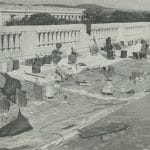
1949 – First 40-hour week for U.S. railroad industry.
1951 – First 40-hour work week on Canadian railroads.
1952 – First pension checks issued by Local 28 in New York City, N.Y. This program is a first of its kind in the building trades.
1954 – First General Vice President in Charge of Railroads appointed.
1955 – Copper box for AFL cornerstone fabricated by Local 102 (Washington, D.C.) member Charles Heinz, employed at Paul Stromberg shop.
1955 – SMWIA shopmen join in striking Louisville and Nashville Railroad while winning hospital and medical care benefits.
1955 – The AFL and the CIO merge to form the AFL-CIO, as the larger AFL became more open to organizing efforts among unskilled workers and more tolerant of affiliates organizing along industry-wide rather than craft lines.
1956 – Supreme Court upholds union representation in railroad union shops, overruling a state right-to-work law.
1956 – Organizing Department established at IA.
1957 – SMWIA begins tracking industry products manufactured under collective bargaining agreements.
1957 – SMWIA publishes Union Label directory.
1960 –Political Action League (PAL) launched.
1961 –SMWIA and SMACNA establish the Sheet Metal Apprentice and Training Foundation, which in turn publishes The Sheet Metal Craftsman, the first industry training manual.
1961 –SMWIA and SMACNA establish Joint Industry Fund via SFUA to finance educational and public relations campaigns.
1962 – SFUA developed for production workers.
1963 – SMWIA becomes first union to offer its members accident insurance, protecting members at work and at home in cases of accidental death.
1965 – A fire and explosion at a Titan II missile silo at a nuclear weapons facility near Little Rock, Ark., kills 53 people, including 13 sheet metal workers.
1966 – National Pension Fund established for SMWIA members in construction and production occupations.
1969 – Construction Users Anti-Inflation Roundtable established to undermine labor and labor’s hold on apprenticeship training and skilled workers (this roundtable supported non-union construction contractors and “merit construction”).
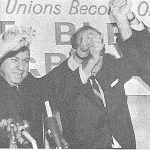
1969 – United Transportation Union (UTU) established, merging four previously independent unions: the Brotherhood of Railroad Trainmen (BRT), the Brotherhood of Locomotive Firemen & Enginemen (BLF&E), the Order of Railway Conductors & Brakemen (ORC&B), and the Switchmen’s Union of North America (SUNA).
1970 – International Association of Railroad Employees, a majority African-American union, joins with the UTU.
1971 – National Maintenance Policy Agreement established to promote labor-management cooperation in the construction trades.
1971 – Article 10, Section 8 of SFUA adopted, establishing arbitration and mediation procedures between SMWIA and SMACNA.
1971 – National Training Fund established to set national standards for apprentice training.
1972 SMWIA establishes Government Affairs Department
1973 SMWIA establishes SASMI (wage stabilization) program to help underemployed members affected by the recession.
1975 – Canadian Council of Sheet Metal Workers established.
1975 – Local 30, Toronto, Ontario, sheet metal workers praised for extraordinary work on CN Tower.
1981 – National Energy Management Institute (NEMI) established.
1982 – Resolution 78 approved to help union sheet metal contractors bid specific jobs under flexible contract conditions.
1983 – Publicity campaign against Brown & Root (B&R) launched, to expose the high, hidden costs of non-union construction.
1983 – International Job Bank launches.
1983 – SASMI adds Production & Industrial program.
1983 – U.S. District Council of Railroads formed to coordinate activities of 47 sheet metal railroad locals.
1983 – Office of Canadian Affairs opened.
1985 – Youth-to-Youth program launched to put apprentice members in the field as union organizers.
1985 – National COLA Fund is established to pay cost-of-living adjustments to retirees.
1985 – The Railroad Yardmasters of America (RYA) affiliate with the UTU.
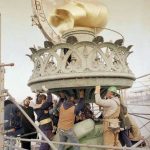
1986 – Sheet metal workers praised for restoration work on the Statue of Liberty for its July 4 centennial celebration.
1986 – National boycott of Toyota Motor Company initiated for their proposed non-union and highly subsidized Georgetown, Ky., assembly plant construction.
1986 – Railroad Workers Department expands into Railroad and Shipyard Worker Department.
1986 – Sheet Metal Occupational Health Institute Trust (SMOHIT) established to address asbestos exposure among sheet metal workers.
1987 – National Labor Relations Board (NLRB) passes Deklewa decision, allowing contractors to simply let union contracts expire.
1988 – SMWIA celebrates its 100th anniversary.
1988 – Florence Carlough Scholarship Fund established as predecessor to the Sheet Metal International Scholarship program.
1990 – Construction Organizing Membership Education Training (COMET) launched.
1993 – SMWIA Education Department established to provide courses for IA staff and local officers.
1993 – More than 100,000 Canadian trade unionists march on Parliament Hill in Ottawa to protest NAFTA.
1994 – SMWIA Production Workers Department established.
1996 – SMWIA launches first website: www.smwia.org
1996 – Mutual Gains Bargaining program initiated.
1996 – SMOHIT reports some 35,000 sheet metal workers and contractors examined for asbestos exposure in preceding 10 years.
1997 – First mutual gains bargaining (MGB) seminar held in New Orleans, La.
1998 – National Training Fund renamed International Training Institute (ITI).
1999 – Disaster Relief Fund established.
1999 – Show Me the Label educational campaign launched.
1999 – Best Practices Task Force established to increase industry marketing.
2000 – First SMWIA-SMACNA Labor-Management Partnership Bi-annual Conference held (later known as the Partners in Progress Conference).
2000 – SMWIA Railroad and Shipyard Department urges a merger with a railroad union at a strategic planning session..
2001 – SMWIA joins forces with IBEW, UA, Boilermakers, Insulators, and Ironworkers in the Mechanical and Allied Crafts (MAC).

2001 – Immediately after the collapse of the World Trade Center towers, construction and sign members working on sites across Manhattan rushed to join their fellow building trades members at Ground Zero in the search for survivors. SMART Transportation Division members were operating the PATH trains that ran beneath the towers after they had been hit by hijacked aircraft and waited until the trains were filled to evacuate as many people as possible.
2002 – First Women Building California Conference held. It would become the predecessor to Tradeswomen Build Nations.
2003 – SMWIA joins the Industrial Union Council (IUC), 14 unions representing workers in manufacturing.
2004 – SMWIA and Painters union co-endorse a Unity Resolution, renewing the 1996 BCTD Solidarity Compact.
2005 – Change to Win Unions – including the Teamsters, UFCW and SEIU – leave the AFL-CIO.
2005 – MAC launched as a division of the BCTD.
2005 – First moves toward merger between SMWIA and UTU initiated.
2005 – New HVAC certification program offered to members.
2006 – Union Sportsmen’s Alliance created.
2006 – Congress passes the Pension Protection Act (PPA).
2006 – Benchmark software developed to complement BIM (Building Information Modeling).
2006 – “Live Up to the Promise” video by SMWIA General President Mike Sullivan calls for standards of conduct.
2006 – Benchmark BIM training software initiative launched.
2006 – UTU re-affiliates with AFL-CIO.
2007 – SMWIA-UTU (SMART) merger agreement negotiated, approved by SMWIA General Executive Council and ratified by UTU membership.
2008 – SMWIA adopts Code of Excellence.
2009 – Recognizing the future impact of green technologies, the SMWIA joins the Blue-Green Alliance.
2009 – Code of Excellence endorsed by SMWIA and SMACNA.
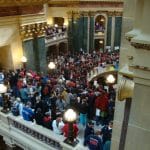
2011 – Merger of UTU and the SMWIA confirmed by arbitration to form the International Association of Sheet Metal, Air, Rail and Transportation Workers (SMART).
2011 – SMART joins massive labor and progressive community actions against multi-state attacks on workers’ rights across the midwestern United States.

2013 – SMART receives official charter from the AFL-CIO.
2014 – SMART holds its First General Convention in Las Vegas, Nev. from August 12 to the 15th.
2017 – In the wake of the 2016 U.S. elections, the SMART Army is established to engage members and get local unions more involved in their local communities.
2018 – “Label It, Scan It, Report It” campaign launched to modernize the SMART Sheet Metal Union Label program.
2018 – SMART Heroes program established to provide career paths for military members transitioning to civilian life who are looking at careers in the sheet metal industry.
2019 – SMART holds its Second General Convention in Las Vegas, Nev. from August 12 to the 16th.
2020 – In March, COVID-19 is officially declared a pandemic by the World Health Organization as it spreads across North America and the world. This affects tens of thousands of SMART members, as it shuts down jobsites and halts or reduces freight, transit and passenger transportation across North America.
2022 — The first SMART Leadership Conference is held in San Francisco, Calif., in late July and early August, where officers from the Sheet Metal and Transportation Division hold educational sessions to improve the power and solidarity within the organization.
December 2022 — A contract is imposed by the federal government on four railroad unions, which include the SMART Transportation Division, BMWED, BRS and IBB. Their membership had voted earlier in the year to reject the tentative National Railroad Agreement, poising them to strike. The House of Representatives had also passed a bill that would have forced carriers to provide seven paid sick days to workers, but Republican opposition to the bill in the Senate made the unable to pass the 60-vote threshold to avoid a filibuster.
Dec. 13 and 14, 2022 — SMART members organize and lead a rally outside Capitol Hill to secure fair sick leave for rail workers. The following day, SMART-TD officers testify before the Federal Railroad Administration regarding setting a two-person crew minimum aboard the nation’s freight trains.
Feb. 3, 2023 — A Norfolk Southern train derails in East Palestine, Ohio, drawing world attention to the state of the railroad industry and its safety practices. As the leaders of the largest rail labor organization in the country, SMART union officers help to respond to the unprecedented level of attention the catastrophic incident draws to railroad safety in the nation.
April 28, 2023 — Members of SMART-TD GO-049 (CSX) ratify a historic agreement that for the first time secures paid sick leave for rail operating employees, establishing a benefit in the railroad industry that the majority of the American workforce already enjoy.
June 2023 — SMART General President Joseph Sellers Jr. retires and is succeeded by Michael Coleman.
August 2024 – The third SMART General Convention is held in Las Vegas, Nev.
September 2024 – SMART become the first building trade union, in partnership with SMACNA, when it unveils to program to supply parental leave to sheet metal members.
February 2025 – SMART becomes the first building trades union to offer child care benefits to members in the United States.
April 2025 – SMART sheet metal apprentice Kilmar Abrego Garcia is deported from the United States on March 15, 2025, in what the Trump administration called “an administrative error.” He found himself imprisoned without trial in the Salvadoran maximum security Terrorism Confinement Center (CECOT), despite never having been charged with nor convicted of a crime in either country.
On April 10, 2025, the Supreme Court of the United States unanimously ruled that Abrego Garcia’s removal to El Salvador was illegal. The Court rejected the administration’s defense, which claimed it lacked the legal authority to exercise jurisdiction over El Salvador and secure his return.
This case brought national and global attention to the controversy around the Trump Administration’s approach to due process in the United States.
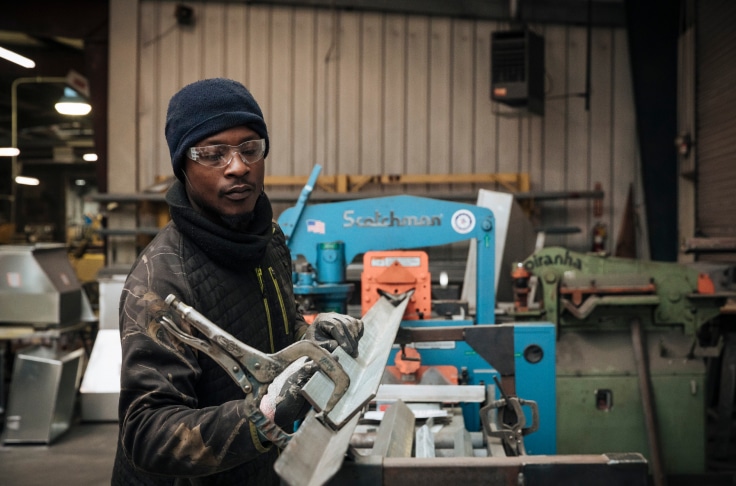
Become a SMART Member
Take the next step on your journey towards a rewarding career. Learn how you can become a SMART member.
Member Voices
Hear about the Union directly from SMART Union members themselves.
